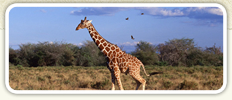Top 10 Most Common Dangers of Trekking
Embarking on a trekking trip offers rewards that can be hard to describe for those who love to visit only castles, cathedrals, and museums. The views can be terrific, but for most of us it's about the sense of achievement. But the rewards can be balanced by the rather extensive list of dangers that can befall us on our journey. Here are some of the most common dangers you should be aware of:
1. Fatigue.
This is perhaps the most obvious, since trekking can be arduous and can strain even the fittest physiques. You can suffer conditions such as cramps, and that can prove extremely dangerous especially when you're off the beaten path and you're far from the comforts of civilization.
2. Dehydration.
It's easy to avoid drinking water on a trek, especially when you're in high altitudes. The very minimum you can drink is at least 3 litres for every 4 to 5 hours of hiking. You'll know when you're not drinking enough when you feel thirsty (of course), your urine volume is less, and you feel the onset of dizziness and headaches.
3. The weather.
Extreme weather is a killer. That means you need to get weather reports first and you have to dress accordingly. You may want to bring a radio or a smartphone that can bring you constant weather updates, and you should always have someone in the civilized world who knows where you are in case bad weather strikes.
4. Getting lost.
This is the result when you don't have a map with you or you don't know how to read one. Getting lost is quite common even for experienced hikers, who like to try out new paths and end up not knowing where they are exactly.
5. Trekking at night.
This is one of the most foolish things you can do when you're on a trekking journey. Your torch simply won't do at all at night, so you better hunker down and rest during the sunless hours. While you're at it, make sure you have a comfortable bed.
6. Hunger.
Don't skip meals! Always remember that you need power to stay active and healthy.
7. Falling.
This can happen when you have the wrong gear or when you're not taking enough precautions when traversing tricky terrain. This can also be fatal when you fall off rickety bridges and slippery iron ladders of mountain faces.
8. Overexposure to the sun.
Always use sunscreen, and bandannas and protective clothing are crucial. Getting sunburn can be painful and annoying, but extreme overexposure can lead to life-threatening medical conditions.
9. Poisons.
Walking through forests can put you in contact with poisonous plants and animals.
10. Parasites.
These microscopic creatures live in stagnant water, so don't drink or swim there.
Common sense dictates that you should make sure of all your preparations before you embark on your trek. And that includes getting Globetrekkers travel insurance beforehand. Accidents can derail even rigorous preparations and the best laid plans, and the Globetrekkers travel insurance can make sure that you are prepared to the utmost for any contingency that may come up.
Tweet » find out more and get quote click here![[logo]](/images/logo.png)

